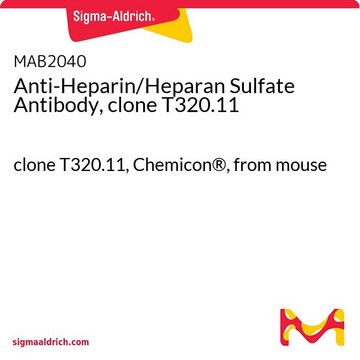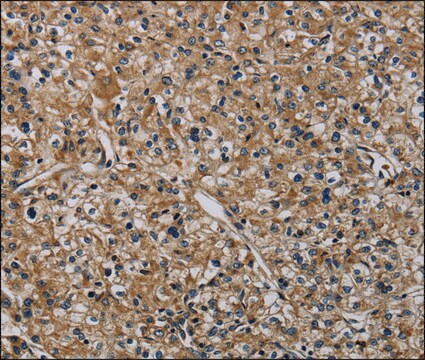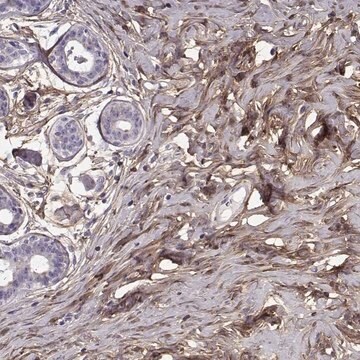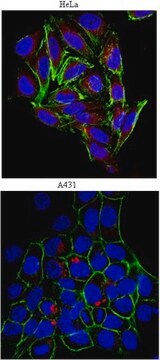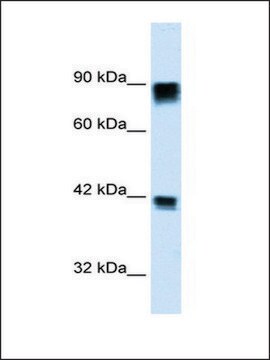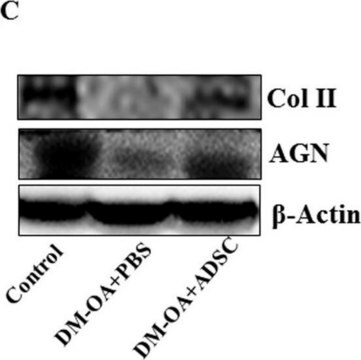MAB1286-I
Anti-Nuclear Spliceosomes Antibody, clone 780-3
About This Item
FACS
IF
WB
flow cytometry: suitable
immunofluorescence: suitable
western blot: suitable
Produits recommandés
Source biologique
mouse
Niveau de qualité
Conjugué
unconjugated
Forme d'anticorps
purified antibody
Type de produit anticorps
primary antibodies
Clone
780-3, monoclonal
Espèces réactives
human
Conditionnement
antibody small pack of 100 μg
Technique(s)
electron microscopy: suitable
flow cytometry: suitable
immunofluorescence: suitable
western blot: suitable
Isotype
IgMκ
Séquence de l'épitope
Unknown
Numéro d'accès Protein ID
Unknown
Conditions d'expédition
dry ice
Modification post-traductionnelle de la cible
unmodified
Description générale
Spécificité
Immunogène
Application
Evaluated by Flow Cytometry in permeabilized HeLa cells.
Flow Cytometry Analysis: 2 μg of this antibody detected Nuclear Spliceosomes in one million permeabilized HeLa cells.
Tested Applications
Flow Cytometry Analysis: A representative lot detected Nuclear Spliceosomes in Flow Cytometry applications (Clevenger, C.V., et al. (1985). Cytometry. 6(3): 208-14; Bauer, K.D., et al. (1986). Cancer Res. 46(5): 2428-34; Clevenger, C.V., et al. (1987). Cytometry. 8(3): 280-6).
Immunofluorescence Analysis: A representative lot detected Nuclear Spliceosomes in Immunofluorescence applications (Clevenger, C.V., et al. (1984). J Histochem Cytochem. 32(7): 757-65; Clevenger, C.V., et al. (1985). Cytometry. 6(3): 208-14; Bauer, K.D., et al. (1986). Cancer Res. 46(5): 2428-34; Clevenger, C.V., et al. (1987). Cytometry. 8(3):280-6; Clevenger, C.V., et al. (1987). Cytometry. 8(3): 280-6).
Western Blotting Analysis: A representative lot detected Nuclear Spliceosomes in Western Blotting applications (Clevenger, C.V., et al. (1987). Cytometry. 8(3): 280-6; Kumar, P., et al. (2012). PLoS One. 7(8): e42712).
Electron Microscopy: A representative lot detected Nuclear Spliceosomes in Electron Microscopy applications (Clevenger, C.V., et al. (1984). J Histochem Cytochem. 32(7): 757-65; Bauer, K.D., et al. (1986). Cancer Res. 46(5): 2428-34; Clevenger, C.V., et al. (1987). Cytometry. 8(3): 280-6).
Note: Actual optimal working dilutions must be determined by end user as specimens, and experimental conditions may vary with the end user
Forme physique
Stockage et stabilité
Autres remarques
Clause de non-responsabilité
Vous ne trouvez pas le bon produit ?
Essayez notre Outil de sélection de produits.
Code de la classe de stockage
12 - Non Combustible Liquids
Classe de danger pour l'eau (WGK)
WGK 2
Point d'éclair (°F)
Not applicable
Point d'éclair (°C)
Not applicable
Certificats d'analyse (COA)
Recherchez un Certificats d'analyse (COA) en saisissant le numéro de lot du produit. Les numéros de lot figurent sur l'étiquette du produit après les mots "Lot" ou "Batch".
Déjà en possession de ce produit ?
Retrouvez la documentation relative aux produits que vous avez récemment achetés dans la Bibliothèque de documents.
Notre équipe de scientifiques dispose d'une expérience dans tous les secteurs de la recherche, notamment en sciences de la vie, science des matériaux, synthèse chimique, chromatographie, analyse et dans de nombreux autres domaines..
Contacter notre Service technique